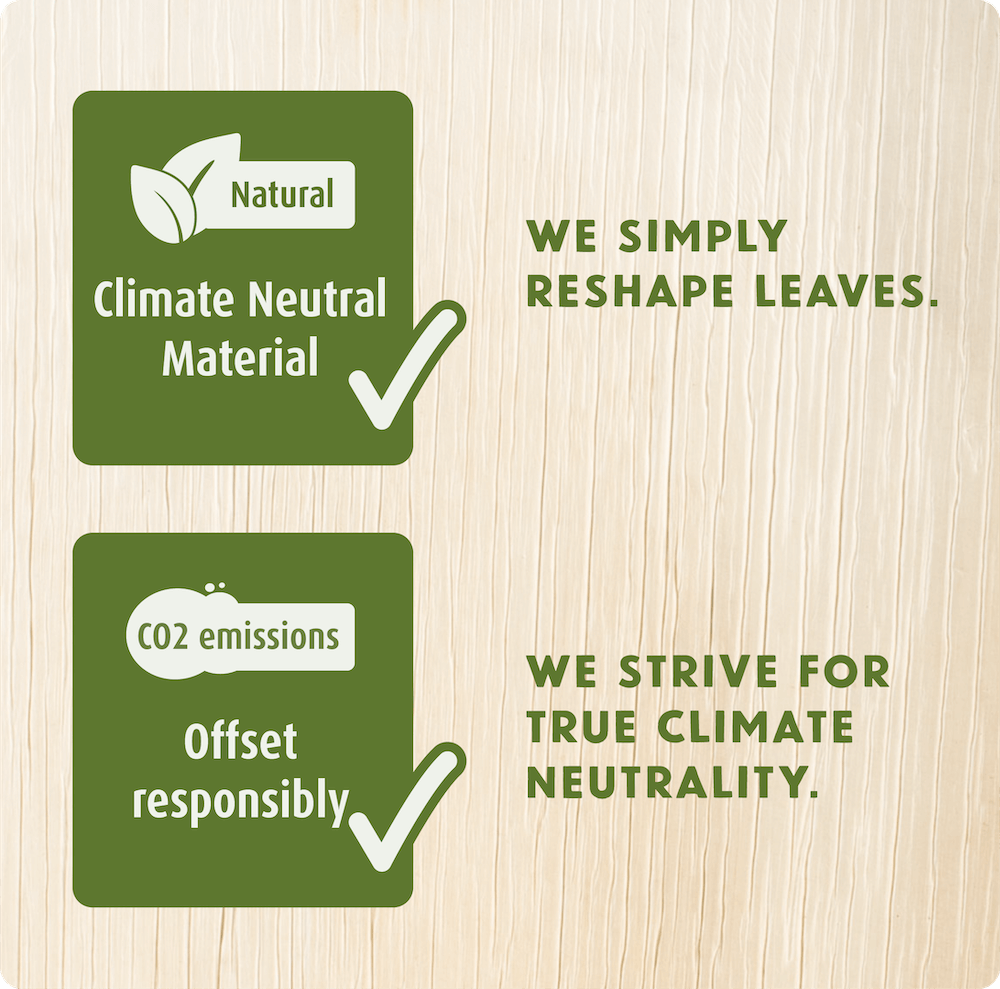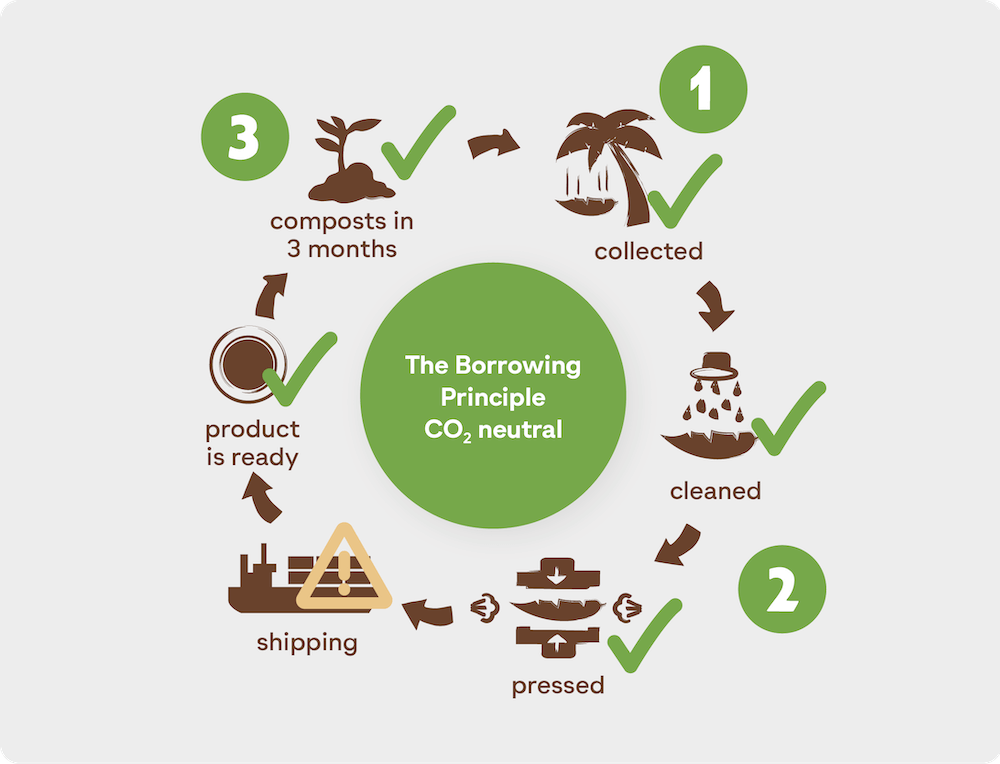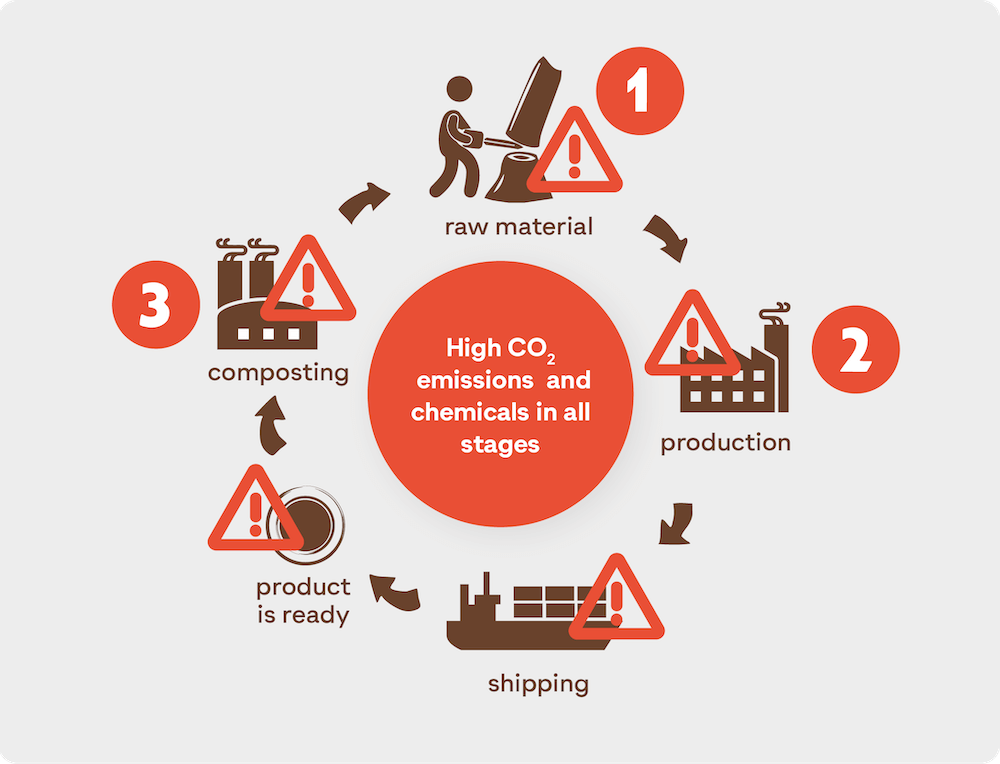LEEF & Climate neutrality
Preface by the founder Claudio Fritz-Vietta, 2024:
“Climate neutrality” has become a misleading term, often masking the offsetting of emissions through questionable projects. At LEEF, we strive for true climate neutrality, driven by a dedicated team committed to establishing sustainable practices for future generations.
Utilizing leaves as our emission-free raw material is a key aspect of our approach. We are progressing towards entirely renewable energy usage, with mainly transport emissions remaining, which we off-set through genuine projects. We will be the first to use emission free transport like green hydrogen ships, developed by other dedicated people out there.
Our journey is fueled by like-minded individuals like you, all striving towards a common goal. We aim to offer our contribution: A climate-neutral packaging without drawbacks, delivering the benefits of nature in every leaf, right to your doorstep.

2023
Currently in calculation
2022
Carbon footprint Report
offsetting projects
Palm leaf Versus competing materials
Climate Neutrality and Circularity of Palm Leaf compared to other “Green Materials”.
Palm Leaf
Palm leaves originate from the soil and return to it after use, a process we refer to as ‘‘borrowing’’. They decompose into healthy compost, unlike synthetic materials such as pulp/bagasse or bioplastics/PLA, which become inert biomass. This makes palm leaf an excellent addition to composting plants, especially where other ‘‘compostable’’ materials are often sorted out.
paper, bagasse & co “Eco friendly”
materials like Pulp, Bagasse or Biopolymers are in no way circular or climate friendly. They remain industrially produced artificial materials that are carbon intensive to extract and difficult to reintegrate into nature.
Life cycle
Palm Leaf

1. Raw Material
From a climate perspective, palm leaves fundamentally differ from materials like paper, bagasse, and biopolymers. While other industrial materials have a large carbon footprint from mining, logging and material creation, palm leaves are climate-positive, actively binding carbon from the atmosphere.
2. Processing
The leaf reshaping process utilizes small machines primarily powered by renewable energy sources such as hydro, wind, and solar. LEEF is working on expanding its solar capacity to ensure production relies solely on renewable energy. As no chemicals are used, the water does not need to be purified after production and it is suitable for direct agricultural use.
3. Disposal
LEEF Palm leaf products effortlessly decompose in all composting scenarios — natural, home, and industrial. This eliminates emissions found in other materials due to additional transportation or recycling/wishcycling* challenges.
paper, bagasse & co

1. Raw Material
The material creation alone of alternative ‘‘green’’ materials often has higher emissions than the entire life cycle of palm leaf, including transport.
2. Processing
The processing of industrial materials usually involves huge industrial plants with high energy and water consumption. Toxic wastewater is often dumped or needs to be purified in another industrial plant.
3. Disposal
“Compostable” materials like bagasse and pulp are frequently sorted out in composting plants as they often don’t decompose into sellable compost or fertilizer. In addition, they often contain toxic materials like PFAS that poison compost and groundwater after disposal. Paper needs to be coated for use with food and thus can’t be recycled.
*Wishcycling: Plastic food packaging recycling is highly ineffective and unlikely to improve. Complete separation of food from packaging is challenging, and if any container comes into contact with toxic materials, the entire batch of recycled material is deemed unsuitable for reuse with food.
Despite nearly 40 years of plastic recycling efforts in Germany, only around 5.6%* of plastics are recycled. Over 94% of post-consumer packaging waste is still burned, exported, or dumped. Greenwashed figures of higher quotas are trying to give a different impression. Recycling is used by the industry as a feel-good concept for consumers who “wish” their plastic waste is recycled, but in reality, much of it ends up in landfills and oceans. This phenomenon is known in the disposal industry as “wishcycling”.
*https://www.spiegel.de/wissenschaft/technik/plastikmuell-deutschland-recycelt-nur-5-6-prozent-des-abfalls-a-1248715.html
*https://baubiologie-magazin.de/pfas-herausforderung-fuer-wohngesundes-bauen-und-wohnen/



